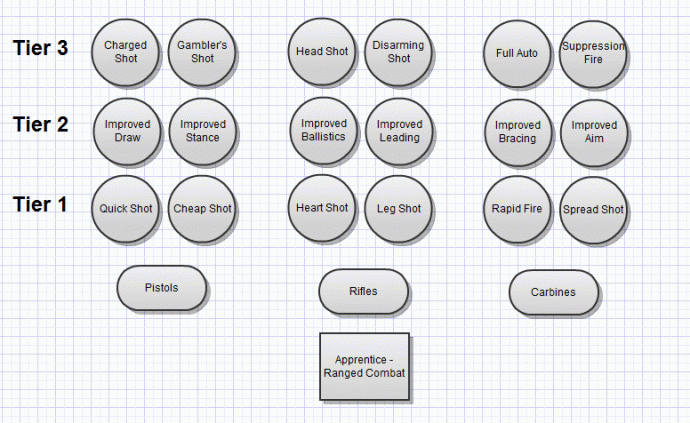In most MMORPGs, the concept of “factions” refers to NPC organizations that a player can gain or lose reputation points with. Once enough points are gained, certain rewards are unlocked.
Starborn Universe takes a slightly different approach. NPC and PC factions both exist in the world, and both reward loyalty. Not all are mutually exclusive – gaining reputation with one faction won’t necessarily reduce reputation with another. NPC factions never change which other NPC factions they like or dislike. However, PC factions can alter their standing with NPC factions depending on the behavior of their members.
Let’s say there’s a PC faction called the Deepwell Alliance. It’s comprised primarily of players who, up to this point, have slaughtered a lot of Alarian Imperial troops. However, a new resource has been discovered deep in Alarian territory where a large number of high-level Alarian NPCs roam. The Deepwell Alliance as a whole begins focusing on killing members of an NPC faction opposed to the Alarian Empire and avoiding any interaction with Alarian NPCs. As a result, the Deepwell Alliance’s reputation with the Alarians increases to the point where they can begin normal interactions again and won’t be attacked on sight.
A player’s PC faction is determined by the guild that she has chosen to join. If she has no guild, she has no PC faction, and can remain neutral in conflicts on that scale. Guilds, also, can choose to remain neutral and not join a PC faction. Any two or more guilds can band together to create a PC faction. From that point forward, reputation gains of each player in the faction are aggregated into a whole. Reputation is no longer a solo activity.
PC factions are the source of the largest and most powerful player-crafted buildings. Only factions are allowed to own and operate player kingdoms, for example. A special kind of player city, a Capital, can be designated by a faction. This grants a boost to all other traits of said city while it remains a Capital. There can only be one Capital per player kingdom, and only those factions that own at least four cities can create one. Player kingdoms can also create siege weapons, a vital component of faction warfare.
Guilds, on the other hand, are a much more intimate construct. Any two players can form a guild together. Guilds can own and operate a single player city, and operate much like guilds from any other modern MMORPG – including players gaining reputation with their own guild and unlocking benefits that way.
